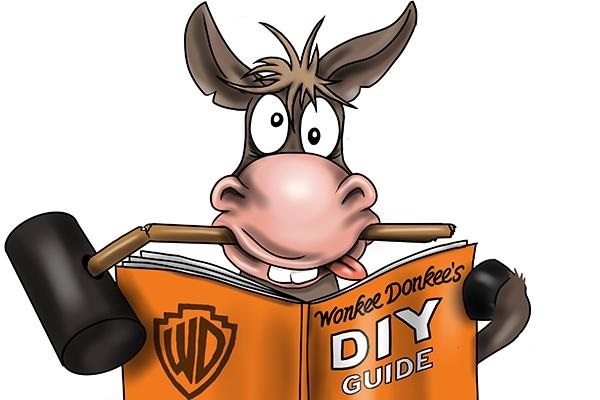Best Makita SDS Drill / Hammer Drill
Best Makita Hammer Drill Review
Welcome to our review of Makita hammer drills or SDS drills. We love Makita, they’re a premium power tool manufacturer and with hammer drills, we find that they tend to be the most comfortable to use. One of the reasons Makita makes incredible power tools is because they don’t just focus on one area to excel in, they focus on designing all-round great tools. You can tell this as soon as you pick up a Makita hammer drill, as the first thing you notice is how comfortable the ergonomic design is.
This is why we have decided to select to review our favourite Makita SDS drill. If you look at the Makita power drill range you will realise that it wasn’t an easy decision for us to pick the best. However, the DHR202Z SDS Plus Rotary Hammer Drill Plus rotary hammer drill is just that little bit better than all other models as an overall tool that can do everything you need. It’s a cordless drill which to us is important because they’re so much more practical. Don’t think that this means that you lose out on power though, this drill would compete with most corded drills on the market.
Makita DHR202Z SDS Plus Rotary Hammer Drill
We love this particular hammer drill. To start off with, the ergonomic shape makes it comfortable and easy to use, with the rubber grips adding a little extra firmness to the grip. There’s nothing worse than a drill that moves around in the hand whilst you’re using it, compromising the quality of your work.
The LED light is also a nice touch, it helps to illuminate your workspace. This can be useful when working in the dark or in awkward places where there isn’t always enough light. The weight of this hammer drill is another factor that makes it really comfortable to use. At 3.5 KG this hammer drill is very light for its power output making it easy to use for everyone and very portable.
It’s very much a drill for beginners and professionals alike. It’s not only comfortable but also really straight forward to use. The one-touch slide chuck function means you can change bits effortlessly, and the built-in torque limiter automatically stops the machine if the bit jams. Not only protecting the tool from damage but also the operator from injury.
As it’s Makita you know that there is also power hidden in there too. With no load-speed, you can reach up to 1100 RPM and 4000 BPM. The RPM and BPM synchronize together throughout through the different power settings so the balance is always right. In addition to this power, the chisel can rotate 360º and can access up to 40 various positions offering plenty of flexibility. It’s also compatible with 18V Li-ion batteries. These batteries are known to last longer than their NA-MH and Ni-Cad counterparts.
Finally, compared to like-for-like drills, it’s pretty affordable too making it perfect for most budgets. So, if you are a contractor, masonry professional or just a keen DIY’er the Makita DHR202Z SDS Plus Rotary Hammer Drill is definitely worth a look at.
Specifications
- Motor Size: 18 Volts
- Weight: 3.2 KG
- Maximum Speed: 1,100 RPM
What We Like:
- One-Touch Slide Chuck
- 4,000 BPM
- 360º Rotating Chisel
Our Verdict
Makita Hammer Drill Buying Guide
What is a hammer drill?
A rotary hammer (also known as a hammer drill) is a type of power tool which creates a hammering action to penetrate the drill into certain objects with ease. The hammering motion of this tool creates a rapid thrust to pulverize any delicate (and not so delicate) material to drill through without requiring too much force from the operator or damage your tools. If you have ever tried to drill a hole through tough material using a normal screwdriver drill then you will know it is physically difficult as well as unforgiving on the tool.
The way in which hammer drills work is the same technological concept used in other power tools such as the demolition hammer, chipping guns, and breakers. The hammer drill is also referred to as “roto-drill” and “hammering drill” and either come as corded or cordless. Typically corded models are bulkier with a bigger motor in order to produce more power. On the other hand, cordless hammer drills are more compact and lightweight with a smaller motor.
Over the years, cordless drills have been much less powerful than a corded hammer drill for this reason. However, as technology develops the cordless hammer drills are closing this gap and are becoming increasingly popular for contractors.
History of the Hammer Drill
The origin of the hammering drill is a matter of debate. The Fein Company in Germany has patented the “Bohrmaschine mit elektro-pneumatischem Schlagwerk” and sold it to the public in 1914.
On the other hand, Hilti made the Hilti TE 17 in 1967 which is dubbed as the “first electro-pneumatic hammer”. Whilst the Milwaukee Electric Tool Corporation claims that they have made the same kind of tool (a 1/4 inch electrical powered cam action hammer drill) and have been selling it since 1935.
The Bosch Company which is a reputable electronics company in Germany also invented their version of the rotary hammer called the “Bosch-Hammer” and was mass-produced around 1932.
All of these major power tool manufacturers like to claim that they are the original inventors of the hammer drill, mostly due to marketing reasons. But in honesty, who invented the hammer drill first really depends on what you define as a hammer drill. Over the years there is a range of different designs and technology used in order to make their hammer drill work.
What are the different types of Hammer Drill?
Basically, from all of the old designs, there are 2 types of premium hammer drills which are commonly used by everybody. This is because it is simply the best technology in order to get a lot of concentrated power in one place. These two hammer drill designs are the ‘Cam-Action (percussion)’ and the ‘Electro-pneumatic’. Below we have outlined the key points of both of these hammer drill technologies to help you choose which is best for you.
Cam-Action
Cam-Action can also be referred to as a percussion hammering mechanism. This concept works with 2 sets of toothed gears which interact with each other to create a hammering action while the drill rotates. Specifically, the chuck mechanism (chuck and bit) moves forward and backwards whilst it rotates at the same time. Cam-Action rotary hammering drills can be used with or without the hammering motion.
But, it is not possible to use it with only the hammering motion as the rotation of the “cams” causes the drill to pound. Cam-Action hammer drills are often built for lower power units. So they are not recommended to be used for heavy-duty construction drilling, only the occasional drilling of concrete and other hard-surfaced materials.
Electro-Pneumatic
Electro-pneumatic hammer drills are often reserved for bigger and more advanced power units. Often called “rotary hammers”, they utilize a kind of technology called the electro-pneumatic hammering mechanism to pulverize tougher surfaces with a bigger impact force. The piston and the hammer of the tool do not actually touch. But the “EP” chamber creates air pressure which then initiates the transfer of stronger and more efficient hammering energy, as compared to the cam-action counterparts.
The majority of the rotary hammers (as well as electric powered chipping guns and jackhammers used today) are manufactured using this kind of technology. They are preferred for use in industrial work as modern units allow their hammer and rotation mechanism to be used as separate modes or combined. When the hammer mode function of the tool is used, the electro-pneumatic hammering drill can be used as a jackhammer tool, which is great if you only need one now and again.
What are the main uses of the Hammer Drill?
The clutch component of the hammering drill is specifically designed to spin the drill bit while simultaneously hammering it along the bit’s axis with an ‘in and out’ motion at the same time. The actual distance where the bit travels and the force of the blows exerted are relatively small and the hammering action happens very fast that it creates a thousand blow per minute (BPM) or 1,000 impacts per minute (IPM).
Although the distance is quite small, the repeated blows created by the tool are good enough to break up hard surfaces such as cement or brick as the spiral flutes of the drill bit whisk all the debris away. This makes the rotary hammer a more favourable tool compared to a regular drill. This is because it has the capacity to drill through concrete faster and with less physical force exerted. Moreover, it is also the tool of choice for creating holes for anchors bolts, wall plugs, and concrete screws.
Almost all hammer drills have a button or switch to turn on or turn off the special “hammer clutch” function when needed. This will enable its user to utilize the tool for fragile materials such as wood or metal. There is no denying that rotary hammers are more expensive and bulkier than conventional hand drills, but they are more preferred to be used in applications where quick drilling is required.
Makita Hammer Drill Safety Features
At Wonkee Donkee, personal safety whilst using any power tool is of the utmost importance. In this next section, we outline the main key safety points that you need to know before using a hammer drill.
Read the User’s Manual before using the tool for the first time in actual drilling applications. Use appropriate safety equipment such as safety gloves and goggles to avoid your hands from being injured as well as preventing the concrete chips or debris to enter your eyes.
Try to determine if the model of the drill is appropriate for the project you are going to do. Hence, the capacity of the battery matters. The battery of a cordless rotary hammer often comes in 6 volts to 36 volts. The more voltage you have, the more capable is the tool for completing any kind of job you can think of. Using a weaker tool to complete a heavy-duty task can be dangerous as you can cause damage to yourself or the power drill in the process.
Conclusion
Both types of hammering drills follow the same principle for drilling holes in stones and masonry. They are also used for creating holes in concrete footings, where concrete wall forms are usually pinned. Other than that, they can also drill holes to concrete surfaces so that wall framings can be attached.
Larger units of rotary hammers are also utilized for doweling as well as creating holes through masonry walls and other concrete surfaces. The hammering motion of the tool helps break up the concrete so that it can be easily removed by the drill bit’s flutes while initiating the drilling process.







